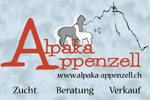Articles by Alpaca World Magazine:
Alpaca Fleece Classing Code of Practice
Rachel Hebditch
The Australian Alpaca Association has produced a new publication the Alpaca Fleece Classing Code of Practice which sets out to establish an industry standard for the preparation of fleece.
The purpose of the Code of Practice is to prepare alpaca fibre with a high degree of consistency to meet the diverse needs of processors so that it is a fibre that processors can use with confidence. It is hoped that it will maximise competition at sales in the international arena so as to increase the net return to Australian alpaca producers.
The Australian national herd is considerably larger than ours but this booklet makes interesting reading for breeders who want to skirt and class their own fleece.
It also sets out the responsibilities of the alpaca breeder and refers to another document available on the AAA website - the Shearing Shed and Pre-Classing Code of Practice.
Cameron Holt writes in his introduction 'At the present stage of the industry, there still remains a sector of breeders whose herds display variety in colour and quality within their fibre harvest. Quality variation is a primary factor adding to the difficulty of preparation of fibre, particularly where numbers within herds are small (alpaca fleece has considerable variation between animals, differing parts of the fleece and within a single staple). To become successful suppliers of alpaca fibre to the craft and textile industry, breeders must take the initiative to learn how to properly harvest and prepare their fibre on the farm.
Fibre characteristics that are important in processing alpaca are:
Huacaya
Uniformity in fibre type, Fineness/handle, Colour integrity, Length of staple, Tensile Strength, Lack of guard hair, Crimp structure, Brightness, Yield.
Suri
Lustre, Fineness/handle, Colour integrity, Length of staple, Tensile strength, Lack of guard hair, Uniformity in fibre type, Yield.'
He points out that all these characteristics can be manipulated through husbandry, breeding and management procedures.
'Fibre type is determined by breed classification and genetic makeup.
Fibre fineness (and uniformity) Handle (diameter/micron) is primarily determined by genetic makeup but is also influenced by nutrition and health of the alpaca i.e. illness, stress etc.
Colour is determined genetically. It is important to maintain colour consistency, particularly in pure colours such as white and black.
Length is determined by genetics, nutrition and duration of fibre growth.
Tensile strength is influenced by health, nutrition and environmental factors such as climate.
Guard hair is determined genetically.
Crimp/Lock style is determined by breed (Huacaya/Suri) and correct selection for breeding/genetics.
Brightness/Lustre is determined genetically and correct selection for breeding/genetics.
Yield is influenced by genetics, nutrition/health, climate and duration of fibre growth.'
Breeders should reflect on the fact that shearing is the culmination of a year's work and that it is their responsibility to provide a clean shearing shed, good lighting, adequate labour and to present the animals in a shearable condition. Cutting the grass in their fields just before you shear is not a good idea! Alpacas should be shorn light to dark and the quality of the clean up between animals and colours should ensure there is no contamination of the fleeces from other colours - an absolute no-no for the processor.
The aim of fibre preparation is to make lines of uniform grades of fibre or prepare a fleece for classing and the most efficient way to do this is at the time of shearing.
Cameron Holt describes the various areas of the fleece:
1. Lower leg - coarse, mostly hair-like fibre.
2. Belly - if similar may blend with good pieces, but if coarse in appearance and with guard hair should be placed in the next line (hairy pieces).
3. Apron - mostly highly medullated and coarse fibred. Always keep separate. Area may vary in size from animal to animal.
4. Neck - the fleece on the neck is normally similar to the saddle but is short in length. It is the shortness of length which requires it to be separated. In some cases some increases in coarse guard hair fibres may be found in this area.
5. Middle leg - usually good, slightly stronger fibre but in some animals may be very strong with guard hair in the britch area. Generally stronger in micron compared to the saddle/blanket. In good fleece animals may be shorn with the saddle area.
6. Saddle or Prime blanket - this should be the balance of the fleece. May represent approximately 60% of the fleece but this figure is highly dependent to the overall evenness of the fleece. Some saddle/blanket areas may be 80% and some 40% of the total fleece cut.
7. Stains - all urine, dung, water stains, mud.
8. Vegetable matter - excessive vegetable matter contamination.
The Alpaca Fleece Classing Code of Practice is available on the AAA website and costs 33 Australian dollars, about £22 plus postage.
Tweet



